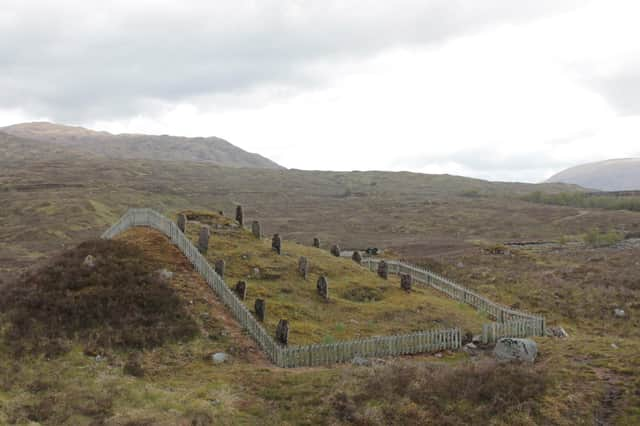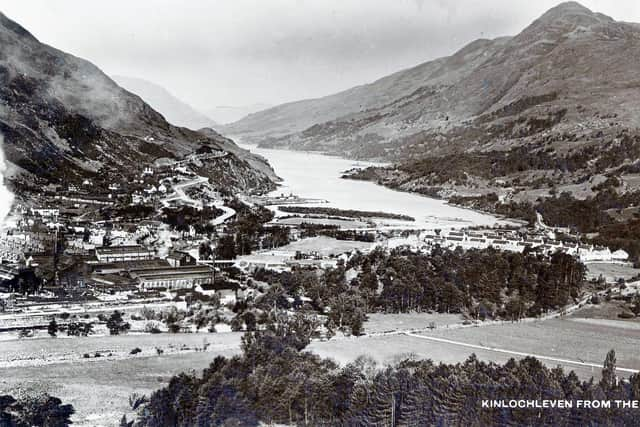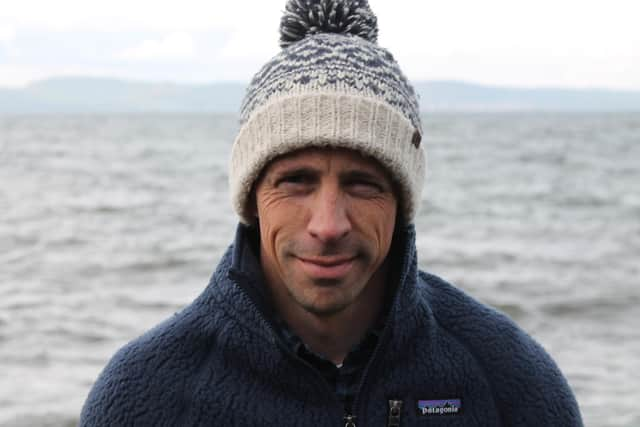Remembering the lost souls of the 'Graveyard of the Unknown'


Darkey Cunningham, John McFadden and John McKenzie are among the small number named at Blackwater Dam navvies’ graveyard that was built for those who didn’t survive the massive project to build a hyrdoelectric scheme for the aluminium smelting industry at Kinlochleven in the Highlands.
Perhaps surprising too is that one woman – Mrs Riley, who died in 1909 – also lies here.
Advertisement
Hide AdAdvertisement
Hide AdFor author Patrick Baker this ‘Graveyard of the Unknown’, as it known locally, perfectly reflects the anonynmity of the itinerant workforce that built the dam at the turn of the 20th Century, those who slipped invisibly around the country in a bid to forge a living.


Up to 3,000 people are known to have been employed for the job by the British Aluminium Company, who between 1905 and 1909 built the Blackwater Reservoir to create the massive load of electricity required to smelt the metal.
The men lived in an encampment below the dam with accounts telling of a lawless, dangerous time and place with men becoming trapped in the mountains by snow as they tried to reach the pub, one skeleton apparently found decades later with a bottle still in his hand.
Mr Baker visited the dam and cemetery for his latest book Unremembered Places, Exploring Scotland’s Wild Histories, and reached the graveyard on the fourth attempt of trying.
He said: “There is this huge feature in the landscape that has a much bigger back story.


“It is really an untold story of the thousands of people who worked there, the Scottish and Irish navvies who worked there in really brutal conditions.
“It was a world of anonymity and it is the counterpoint to this big industrial development in the landscape. I thought it was important to tell that story, the human aspect.”
Mr Baker was partly inspired to visit the Blackwater Dam by the novel Children of the Dead End by Patrick McGill, an Irishman who worked at the constructon site when still a teenager.
Advertisement
Hide AdAdvertisement
Hide AdHe wrote of the squalor of the workers encampment, the ‘muddle of shacks’ that ‘looked like they had dropped out of the sky’ where drinking and gambling were the antidotes to the grind of building a reservoir using hand tools.
Of the graveyard, McGill said: “A few went there from the last shift with the red mick stil on their trousers and their long unshaven beards still on their faces. Maybe they died under a falling rock or a broken derrick jib. Once dead, that was an end of them.”
Mr Baker said McGill’s obscure book was one of the most powerful he had read and pushed him to find the environment documented by the writer, who went on to have a successul career with words.
Mr Baker said: “The graveyard is incredibe, it is such a strange feature in the landscape.
“The important part is the physical journey to reach this place and to try and understand what people would have felt when in this environment.
“The graveyard sits on a prominent knoll and you ask why it was there. It faced the dam where the people who are buried there worked so you have this synchronisation between two points in the landscape.”
While the majority of stones are marked unknown, someone cared enough to carve them carefully, Mr Baker said.
He added: “When you see the incredible time that has been taken to make the inscription, it really brings back this human element to this almost dystopian, lawless and incredibly tough place to live.
Advertisement
Hide AdAdvertisement
Hide Ad“There was this human bonding, a human spirit that existed there . The time take to carve these stones is really humbling.
“I struggled to find any information on these people and I think that makes sense when you think about this huge intinerant workforce. It had no touchpoint in society. People were overlooked. They didn’t have any bearing or being so it is inkeeping with what you would expect and the narrative of the story.
“Having that life wasn’t a choice. They were unaccounted for in life and unacknowledged in history. I wanted to tell that story.”
The Unremembered Places, Exploring Scotland’s Wild Histories, by Patrick Baker is available now from Birlinn Books.